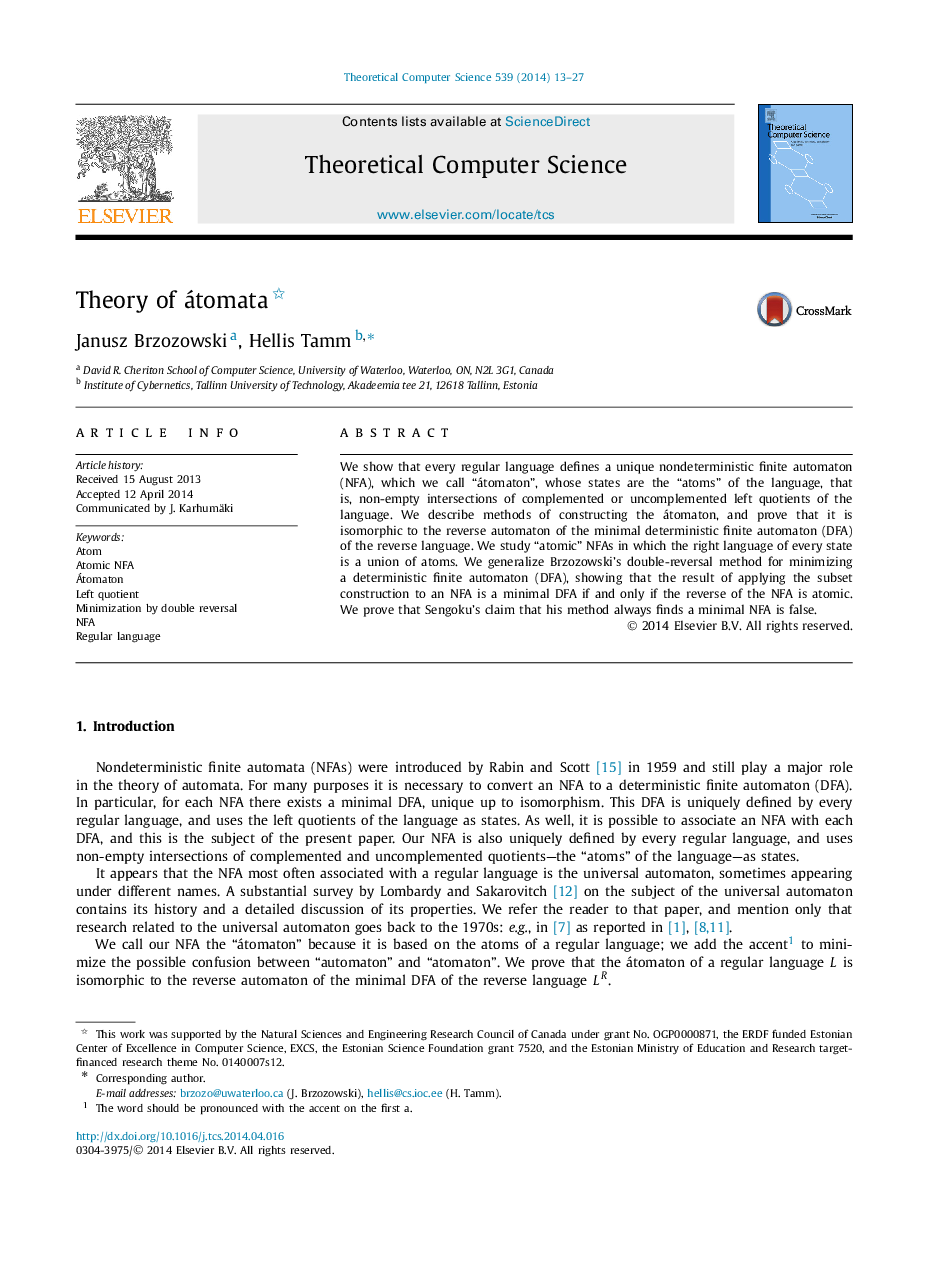| Article ID | Journal | Published Year | Pages | File Type |
|---|---|---|---|---|
| 436306 | Theoretical Computer Science | 2014 | 15 Pages |
We show that every regular language defines a unique nondeterministic finite automaton (NFA), which we call “átomaton”, whose states are the “atoms” of the language, that is, non-empty intersections of complemented or uncomplemented left quotients of the language. We describe methods of constructing the átomaton, and prove that it is isomorphic to the reverse automaton of the minimal deterministic finite automaton (DFA) of the reverse language. We study “atomic” NFAs in which the right language of every state is a union of atoms. We generalize Brzozowski's double-reversal method for minimizing a deterministic finite automaton (DFA), showing that the result of applying the subset construction to an NFA is a minimal DFA if and only if the reverse of the NFA is atomic. We prove that Sengoku's claim that his method always finds a minimal NFA is false.
